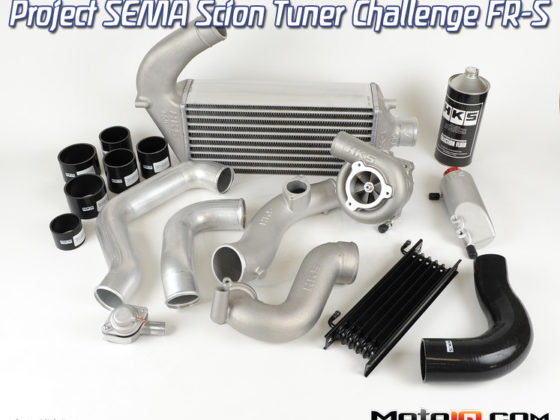,
 Here is something a bit more conventional, a twin turbo V8 displacing 6.75L. This thing may only put out 530hp, but it twists metal with 811 lb-ft of torque! That’s like five Honda engines put together! The intake manifold runners look relatively long which aids in that massive peak torque production.
Here is something a bit more conventional, a twin turbo V8 displacing 6.75L. This thing may only put out 530hp, but it twists metal with 811 lb-ft of torque! That’s like five Honda engines put together! The intake manifold runners look relatively long which aids in that massive peak torque production. Flanking each side of the plastic intake manifold is an air-to-water intercooler; there is one intercooler for each turbo. The flows coming out of each intercooler then merge into one at the throttle body. My guess is that’s an air temperature sensor where the two flows merge. It seems apparent this engine is stuffed into a very tight space as the flow transitions to the throttle body are less than ideal.
Flanking each side of the plastic intake manifold is an air-to-water intercooler; there is one intercooler for each turbo. The flows coming out of each intercooler then merge into one at the throttle body. My guess is that’s an air temperature sensor where the two flows merge. It seems apparent this engine is stuffed into a very tight space as the flow transitions to the throttle body are less than ideal. This is a big engine package crammed into a limited space, so the air plumbing has to be a bit creative. On the inlet to the compressor of the turbo is this plenum thing to give the best possible flow of air into the turbo while making tight 90 degree bends. Notice how the compressor outlet is even moved inward towards the engine with the outlet pipe squeezing right past the turbine inlet pipe coming from the exhaust manifold. Not exactly ideal, but whatcha gonna do when you have no space? An uncommon feature is what appears to be an EGT sensor at the turbine inlet of the turbo.
This is a big engine package crammed into a limited space, so the air plumbing has to be a bit creative. On the inlet to the compressor of the turbo is this plenum thing to give the best possible flow of air into the turbo while making tight 90 degree bends. Notice how the compressor outlet is even moved inward towards the engine with the outlet pipe squeezing right past the turbine inlet pipe coming from the exhaust manifold. Not exactly ideal, but whatcha gonna do when you have no space? An uncommon feature is what appears to be an EGT sensor at the turbine inlet of the turbo. The turbo on the other side of the engine does not have the probe at the turbine inlet. It makes me wonder slightly if the other turbo was a test unit… anyway, it’s not of much consequence. Again, you can see how tightly packaged all of the components are. The compressor discharge pipe on this side has an indentation to provide clearance for the compressor inlet pipe. Both turbos have a heat shield formed tightly around their turbine housings. I’m guessing the exhaust manifolds are double walled stainless steel. The exhausts leave the turbos and dump straight into catalytic converters minimizing the time to light off the cats to minimize cold start emissions.
The turbo on the other side of the engine does not have the probe at the turbine inlet. It makes me wonder slightly if the other turbo was a test unit… anyway, it’s not of much consequence. Again, you can see how tightly packaged all of the components are. The compressor discharge pipe on this side has an indentation to provide clearance for the compressor inlet pipe. Both turbos have a heat shield formed tightly around their turbine housings. I’m guessing the exhaust manifolds are double walled stainless steel. The exhausts leave the turbos and dump straight into catalytic converters minimizing the time to light off the cats to minimize cold start emissions. At the front of the engine is this little oil-coolant heat exchanger.
At the front of the engine is this little oil-coolant heat exchanger.
 I think these are the fanciest exhaust hangers I’ve ever seen. The length of the piping from the turbine outlet to this point is quite long, so there is significant displacement due to thermal expansion and contraction which probably necessitates this design.
I think these are the fanciest exhaust hangers I’ve ever seen. The length of the piping from the turbine outlet to this point is quite long, so there is significant displacement due to thermal expansion and contraction which probably necessitates this design.


